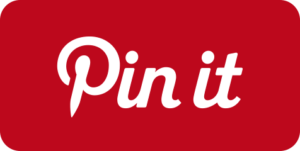Quick links, bringing you great articles on writing from all over the web.
Every author knows that social media is important in the hunt to find readers. But how much time have you been spending on Goodreads? If you are like me, you pop in occasionally when you remember or need to do something. Frances Caballo at Live, Write, Thrive presents her case on why you should spend more of your social media time on Goodreads and the benefits thereof.
~ * ~
How Goodreads Can Help Writers Grow Their Readership
July 1, 2016
 Today’s post is by social media expert Frances Caballo:
Today’s post is by social media expert Frances Caballo:
Goodreads has become the most important networking site on the Internet.
—Forbes
Goodreads has a storied beginning. This is how founder and CEO Otis Chandler describes his epiphany to start what has become a powerful online reader resource and social media network:
One afternoon while I was scanning a friend’s bookshelf for ideas, it struck me: when I want to know what books to read, I’d rather turn to a friend than any random person or bestseller list.
So I decided to build a website—a place where I could see my friends’ bookshelves and learn about what they thought of all their books.
And thus in January of 2007, Goodreads began.
The Goodreads of Today
As of January 2016, Goodreads had 40 million members and featured 1.3 billion books and 47 million reviews.
What I find interesting is that many Goodreads users attended college, and even more of them attended graduate school. Goodreads members are educated, love to read, and love to talk about books. Women read more and review more books than men and dominate this online venue. While men aren’t as active on this site as women, they still participate and are a growing force here.
Authors and Goodreads
Many authors join Goodreads and quickly set up their author dashboards. Then perhaps they want to set up a giveaway. What do they do next? Well, a lot of authors I know then start to neglect Goodreads when the giveaway ends.
Too many writers don’t understand the benefits of maintaining a presence, reviewing books, adding favorite quotes, or joining groups.
Some writers neglect Goodreads to their detriment.
Read the full post on Live, Write, Thrive
~ * ~
If you liked this article, please share. If you have suggestions for further articles, articles you would like to submit, or just general comments, please contact me at paula@publetariat.com or leave a message below.

 By
By  Today’s guest post is by top Amazon reviewer Gisela Hausmann. This content originally ran on the Huffington Post, and it is reprinted here with her permission.
Today’s guest post is by top Amazon reviewer Gisela Hausmann. This content originally ran on the Huffington Post, and it is reprinted here with her permission. A mind-boggling 78 percent of Americans have a social media profile. And a little over half of them are on more than one channel. It is a given that authors can develop loyal audiences and sell more books with the help of social media. But how many social media channels are enough?
A mind-boggling 78 percent of Americans have a social media profile. And a little over half of them are on more than one channel. It is a given that authors can develop loyal audiences and sell more books with the help of social media. But how many social media channels are enough? Part of the How They Do It Series
Part of the How They Do It Series There are many places where readers can find and download e-books. There are a number of online retailers such as Amazon, Barnes and Noble and Kobo that sell them directly. Your local library likely has a robust digital collection or sometimes piracy is just a click away. Good e-Reader has been running a poll for the past three weeks where we asked the question “where do you get your e-books from?” Over 827 people responded and we now have some fairly comprehensive data.
There are many places where readers can find and download e-books. There are a number of online retailers such as Amazon, Barnes and Noble and Kobo that sell them directly. Your local library likely has a robust digital collection or sometimes piracy is just a click away. Good e-Reader has been running a poll for the past three weeks where we asked the question “where do you get your e-books from?” Over 827 people responded and we now have some fairly comprehensive data. In this Indie Publishing Paths series, we first focused on how to decide which path will work best for us. Once we know
In this Indie Publishing Paths series, we first focused on how to decide which path will work best for us. Once we know  Today’s post is by social media expert Frances Caballo:
Today’s post is by social media expert Frances Caballo: All authors love to get new reviews on their books in Amazon, right? Reviews give more credibility and social proof to your book.
All authors love to get new reviews on their books in Amazon, right? Reviews give more credibility and social proof to your book. Part of the Indie Author Series
Part of the Indie Author Series When I finished my latest book, Finding Travis, a time travel story, I sent it out to beta readers and prepared to self-publish as I always do. But then a friend began broadcasting the news that she had entered her latest book in the Kindle Scout program and was looking for nominations. I remembered that another friend had entered his book in the program months ago, and had won the coveted publishing contract with Amazon. Because I really, really liked this new book of mine, and because I had built up quite a decent fan base, I decided to try Kindle Scout for myself.
When I finished my latest book, Finding Travis, a time travel story, I sent it out to beta readers and prepared to self-publish as I always do. But then a friend began broadcasting the news that she had entered her latest book in the Kindle Scout program and was looking for nominations. I remembered that another friend had entered his book in the program months ago, and had won the coveted publishing contract with Amazon. Because I really, really liked this new book of mine, and because I had built up quite a decent fan base, I decided to try Kindle Scout for myself.


 By Jane Davis on June 11, 2016
By Jane Davis on June 11, 2016